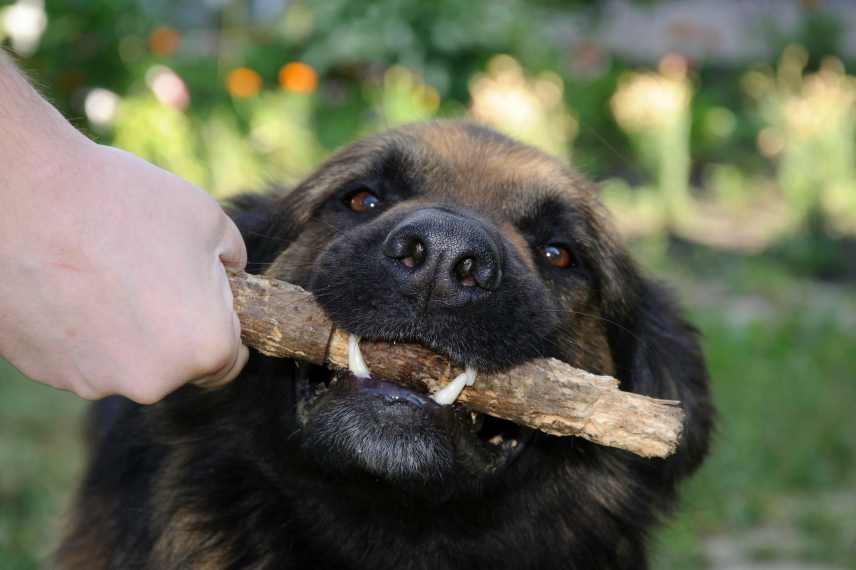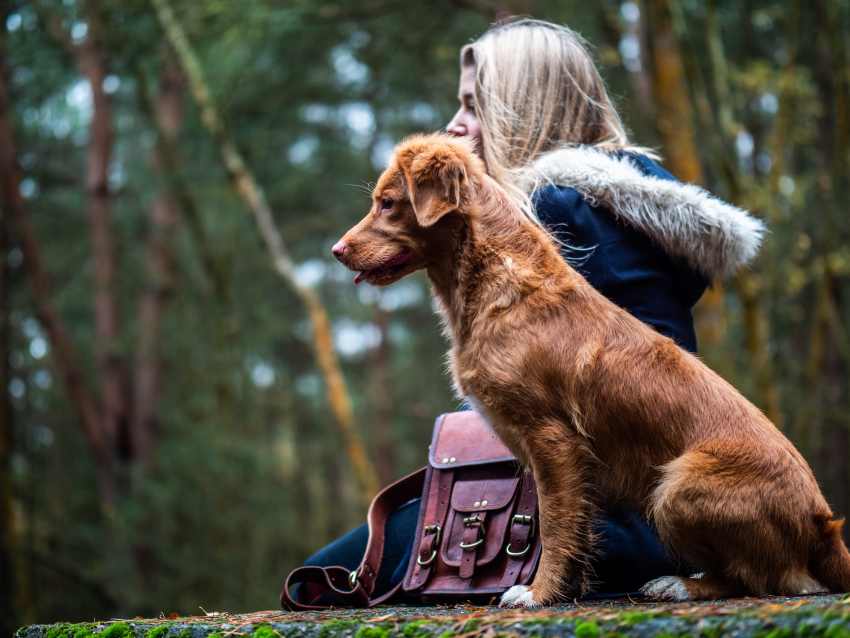Understanding stubborn behavior and then successfully training a stubborn dog can be a challenging yet rewarding experience. While it may seem like an uphill battle, employing the proper techniques can make a significant difference in your dog’s behavior.
Positive reinforcement methods are particularly effective in training stubborn puppies, fostering a strong bond between you and your furry companion while achieving the desired results.
In this guide, we’ll explore strategies and tips on how to train a stubborn dog using positive reinforcement techniques effectively.

Understanding Stubborn Behavior:
Before we talk about how to rain a stubborn dog, it’s essential to understand stubborn behavior and why some dogs exhibit stubborn behavior more than others. Dogs, like humans, have unique personalities and temperaments shaped by genetics, environment, and past experiences.
Stubbornness in dogs often stems from a combination of factors, including independence, strong will, fear, or lack of motivation.
Positive Reinforcement: The Preferred Training Method
Positive reinforcement training focuses on rewarding desired behaviors rather than punishing unwanted ones. This approach relies on reinforcing behaviors through praise, treats, toys, or other rewards, encouraging the dog to repeat those behaviors in the future.
Unlike punitive methods, positive reinforcement builds trust, strengthens the bond between you and your dog, and promotes a positive learning environment.
Effective Techniques for Training a Stubborn Dog
Consistency:
Consistency is key when training a stubborn dog. Establish clear rules and expectations and stick to them consistently. Inconsistency can confuse your dog and hinder progress.
Patience and Persistence:
Training a stubborn dog requires patience and persistence. Be prepared to invest time and effort into training sessions, and avoid becoming frustrated or giving up easily.
Use High-Value Rewards:
Identify highly motivating rewards for your dog, such as favorite treats or toys. Use these rewards to reinforce desired behaviors effectively.
Break Tasks into Smaller Steps:
Break down training tasks into manageable steps, gradually increasing difficulty as your dog progresses. This approach helps prevent overwhelm and builds confidence in your dog.
Positive Reinforcement Techniques:
When your dog exhibits the desired behavior, immediately praise and reward them. Use a cheerful tone of voice and offer treats or affection to reinforce the behavior positively.
Ignore Unwanted Behaviors:
Instead of punishing unwanted behaviors, ignore them and redirect your dog’s focus onto a more desirable behavior. This approach helps avoid reinforcing negative behaviors inadvertently.
Clicker Training:
Clicker training is a popular positive reinforcement technique that uses a clicker device to mark desired behaviors. Pair the clicker’s sound with a reward to communicate to your dog that they’ve performed the desired action correctly.
Training Games:
Incorporate fun training games into your sessions to keep your dog engaged and motivated. Games like hide-and-seek, fetch, or puzzle toys can make training enjoyable for you and your dog.
Conclusion:
Training a stubborn dog requires patience, consistency, and positive reinforcement techniques. By understanding your dog’s behavior and employing effective training strategies, you can build a strong bond with your furry companion while shaping desirable behaviors. Remember to be patient, celebrate small victories, and enjoy the journey of training your stubborn dog.
Incorporating these positive reinforcement methods into your training routine will yield results and create a harmonious and rewarding relationship between you and your furry friend.
Deciphering Stubborn Dog Behavior: Insights and Strategies for Effective Training
Understanding stubborn behavior in dogs is essential for effective training. Stubbornness in dogs can manifest in various ways, and it’s crucial to recognize the underlying causes to address them effectively.
Here are some key factors to consider when understanding how to train a stubborn dog:
Breed Characteristics:
Certain dog breeds are known for their independent and strong-willed nature. Breeds like Siberian Huskies, Beagles, and Shiba Inus are often described as stubborn due to their original purposes and genetic predispositions. Understanding breed characteristics can help you tailor your training approach to suit your dog’s temperament.
Individual Temperament:
Like humans, dogs have unique personalities shaped by genetics, upbringing, and past experiences. Some dogs may be naturally more assertive or independent, leading to stubborn behavior. It’s important to assess your dog’s individual temperament and adjust your training methods accordingly.
Fear or Anxiety:
Stubborn behavior in dogs can also stem from fear or anxiety. Dogs may refuse to obey commands or engage in certain behaviors if they feel stressed or threatened. It’s essential to create a safe and supportive environment for your dog and address any underlying fear or anxiety issues through positive reinforcement and desensitization techniques.
Lack of Motivation:
Dogs, like humans, have different motivations for behavior. A stubborn dog may be less responsive to traditional training methods if they lack motivation or find the rewards offered unappealing. Identifying what motivates your dog, whether it’s food, toys, praise, or play, can help increase their engagement and willingness to participate in training.
Communication Barrier:
Dogs communicate primarily through body language and vocalizations, and misunderstandings can occur when there’s a communication barrier between humans and dogs. A dog may appear stubborn if they don’t understand what is expected of them or if there’s confusion in communication. Clear and consistent communication and positive reinforcement can help bridge this gap and improve training outcomes.
Established Patterns of Behavior:
Over time, dogs may develop habits or patterns of behavior that appear stubborn because they’ve learned that specific actions lead to desired outcomes. Breaking these established patterns requires patience and consistency in training to redirect your dog’s behavior toward more desirable alternatives.
Lack of Training or Socialization:
Dogs that have yet to receive adequate training or socialization from a young age may exhibit stubborn behavior due to a lack of understanding of basic commands or unfamiliarity with social norms. Early and ongoing training and positive reinforcement can help address these issues and shape appropriate behavior.
By understanding the various factors contributing to stubborn behavior in dogs, you can effectively tailor your training approach to address these underlying causes. Patience, consistency, and positive reinforcement are key principles in training stubborn dogs, fostering a positive learning environment, and strengthening the bond between you and your canine companion.

Positive Reinforcement: The Preferred Training Method for How to Train A Stubborn Dog
Positive reinforcement is widely regarded as the preferred training method for stubborn dogs due to its effectiveness in promoting desired behaviors while strengthening the bond between dog and owner. This approach focuses on rewarding desirable behaviors with praise, treats, toys, or other rewards, thereby increasing the likelihood of those behaviors being repeated in the future.
Here’s why positive reinforcement is particularly well-suited for training stubborn dogs:
Builds Trust and Confidence:
Positive reinforcement creates a positive learning environment where the dog feels safe and encouraged to experiment with behaviors. By associating obedience with pleasant experiences such as treats and praise, the dog learns to trust the owner and gains confidence in their abilities.
Strengthens the Bond Between Dog and Owner:
Positive reinforcement enhances the bond between a dog and its owner by fostering a relationship based on mutual respect and cooperation. Instead of using force or intimidation, positive reinforcement encourages communication and collaboration, deepening the emotional connection between the dog and their owner.
Increases Motivation to Learn:
Stubborn dogs may be less responsive to traditional training methods that rely on punishment or coercion. Positive reinforcement, on the other hand, taps into the dog’s natural desire for rewards, making learning more engaging and enjoyable. Owners can increase their dog’s motivation to learn and participate in training sessions by offering enticing rewards for desired behaviors.
Reduces Stress and Anxiety:
Punitive training methods, such as yelling or physical corrections, can cause stress and anxiety in dogs, leading to unwanted behaviors and undermining the training process. Positive reinforcement, with its focus on rewards and encouragement, helps create a calm and supportive learning environment, reducing stress levels and promoting better learning outcomes.
Encourages Problem-Solving Skills:
Positive reinforcement encourages dogs to use problem-solving skills to determine which behaviors are rewarded. This process of trial and error not only reinforces desired behaviors but also stimulates the dog’s cognitive abilities, promoting mental stimulation and enrichment.
Effective for Dogs of All Ages and Breeds:
Positive reinforcement is a versatile training method for dogs of all ages, breeds, and temperaments. Whether you’re training a stubborn puppy or an adult dog with ingrained behaviors, positive reinforcement techniques can be adapted to suit individual needs and preferences.
Creates a Positive Association with Training:
Positive reinforcement creates a positive association with training, making dogs more willing to participate in future training sessions. Owners can create a lifelong love of learning in their dogs by associating training with enjoyable experiences such as treats, playtime, and praise.
Positive reinforcement is the preferred training method for stubborn dogs because it promotes desirable behaviors while fostering a positive relationship between dog and owner. Using rewards and encouragement to reinforce good behavior, owners can effectively train their stubborn dogs while nurturing a strong bond based on trust, respect, and cooperation.
Proven Methods for How to Train a Stubborn Dog: Expert Techniques and Tips
Training a stubborn dog requires patience, consistency, and a tailored approach that considers the individual needs and temperament of the dog.
Here are some effective techniques for how to train a stubborn dog:
Consistency:
Consistency is key when training a stubborn dog. Establish clear rules and expectations and stick to them consistently. Inconsistency can confuse your dog and hinder progress. Ensure all family members or caregivers are on the same page regarding training methods and commands to avoid mixed signals.
Patience and Persistence:
Training a stubborn dog can be challenging and may require more time and effort compared to dogs with more compliant temperaments. Be patient and persistent, and avoid becoming frustrated or giving up easily. Remember that progress may be gradual, and celebrate small victories along the way.
High-Value Rewards:
Identify rewards that are highly motivating for your dog, such as favorite treats, toys, or playtime. Use these high-value rewards to reinforce desired behaviors effectively. Experiment with different types of rewards to determine what your dog finds most enticing, and use them strategically during training sessions.
Break Tasks into Smaller Steps:
Stubborn dogs may feel overwhelmed if training tasks are too complex or demanding. Break down training tasks into smaller, manageable steps, gradually increasing difficulty as your dog progresses. This approach helps prevent frustration and builds confidence in your dog as they master each step before moving on to the next.
Positive Reinforcement Techniques:
When your dog exhibits the desired behavior, immediately praise and reward them. Use a cheerful tone of voice, enthusiastic praise, and rewards such as treats or affection to reinforce the behavior positively. Positive reinforcement strengthens the association between the desired behavior and the reward, increasing the likelihood of your dog repeating the behavior in the future.
Ignore Unwanted Behaviors:
Instead of punishing unwanted behaviors, ignore them and redirect your dog’s focus onto a more desirable behavior. Withholding attention or rewards for unwanted behaviors helps avoid reinforcing negative behaviors inadvertently. Focus on rewarding and reinforcing good behavior, and your dog will learn to offer those behaviors more frequently.
Clicker Training:
Clicker training is a popular positive reinforcement technique using a small handheld clicker to mark desired behaviors. Pair the clicker’s sound with a reward, such as a treat, to communicate to your dog that they’ve performed the desired action correctly. Clicker training helps pinpoint precise moments of desired behavior, making it an effective training tool for stubborn dogs.
Training Games:
Incorporate fun training games into your sessions to keep your dog engaged and motivated. Games such as hide-and-seek, fetch, or puzzle toys provide mental stimulation and reinforce training concepts in a playful manner. Training games make learning enjoyable for you and your dog and can strengthen your bond as you work together toward a common goal.
By incorporating these effective techniques into your training routine, you can effectively train a stubborn dog while promoting positive behaviors and strengthening the bond between you and your furry companion.
Remember to be patient, consistent, and creative in your approach, and celebrate progress along the way. With time and dedication, you can help your stubborn dog become a well-behaved and obedient family member.
How Does Clicker Training Work for Young Puppies?

Clicker training is a way of providing your pet with positive reinforcement following the desired behavior. A clicker is an amazing tool that opens up communication between you and your puppy. This form of training has been shown to speed up the training time tenfold in dogs.
Continue reading: How Does Clicker Training Work for Young Puppies?
Understanding the Challenges of Dog Training: The Importance of Effective Training for Dog Owners

Communication is the key to a harmonious relationship between dog owners and their pets. By understanding canine communication, using clear verbal commands, employing positive reinforcement, and utilizing body language and non-verbal cues, dog owners can effectively train their pets. Patience and consistency are essential ingredients in successful dog training.
Continue reading: Understanding the Challenges of Dog Training
Homemade Dog Treats Are Cost-Effective, Quick and Easy to Make

Homemade dog treats, can sometimes be the secret ingredient to turning even the most stubborn dog around. But the cost of food for ourselves and our dogs is always going to get more expense. So homemade dog treats make sense because they are not only cost-effective, but they are also quick and easy to make.
And you know what’s in them. Unlike mass-produced dog treats which can have all sorts of potentially nasty ingredients. When it comes to feeding my dogs, if I won’t eat it nor should they!
Continue reading: Homemade Dog Treats Are Cost-Effective, Quick and Easy to Make

